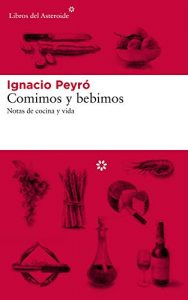
Reading Ignacio Peyró’s excellent, though not for the fussy or vegan, Comimos y bebimos (We ate and drank) a few weeks ago, I came across a sentence that, with both wit and irony, linked Greek geometry with uric acid. Or more precisely, Plato’s sacrosanct Academy with the perhaps somewhat old-fashioned (conceptually) and ancient (founded in 1742) London restaurant Wilton’s. Peyró tells us of Wilton’s: “It offers everything that a certain conservative and gouty guild likes: oysters, game, mahogany-covered dining rooms, pre-Castro cigars and post-Gorbachev girls” – for the record, I know more than one progressive athlete who wouldn’t dislike what Wilton’s has to offer either.
To finish describing Wilton’s, Peyró turns to the most classical Greece:
Just as Plato’s Academy bore the sign “do not enter here who does not know geometry”, Wilton’s could well engrave on its lintels the legend “do not enter here who has not had problems with uric acid”.
 Plato’s Academy was eventually closed by Justinian, back in the 6th century AD, because it had become, according to such a Christian emperor, one of the last strongholds of the already dying Greek paganism. On the other hand, not even the Nazi bombs could stop Wilton’s: “In 1942,” Peyró tells us, “in the middle of the Blitz, the owner of Wilton’s told a customer that she had had enough: a bomb had just been dropped on the neighbouring church of St. James. The customer was the banker Hambro and he told her to add the restaurant to the note. Since then, Wilton’s has remained in the hands of this family of infinite wealth. It is the guarantee that it will never close”.
Plato’s Academy was eventually closed by Justinian, back in the 6th century AD, because it had become, according to such a Christian emperor, one of the last strongholds of the already dying Greek paganism. On the other hand, not even the Nazi bombs could stop Wilton’s: “In 1942,” Peyró tells us, “in the middle of the Blitz, the owner of Wilton’s told a customer that she had had enough: a bomb had just been dropped on the neighbouring church of St. James. The customer was the banker Hambro and he told her to add the restaurant to the note. Since then, Wilton’s has remained in the hands of this family of infinite wealth. It is the guarantee that it will never close”.

Leave a Reply